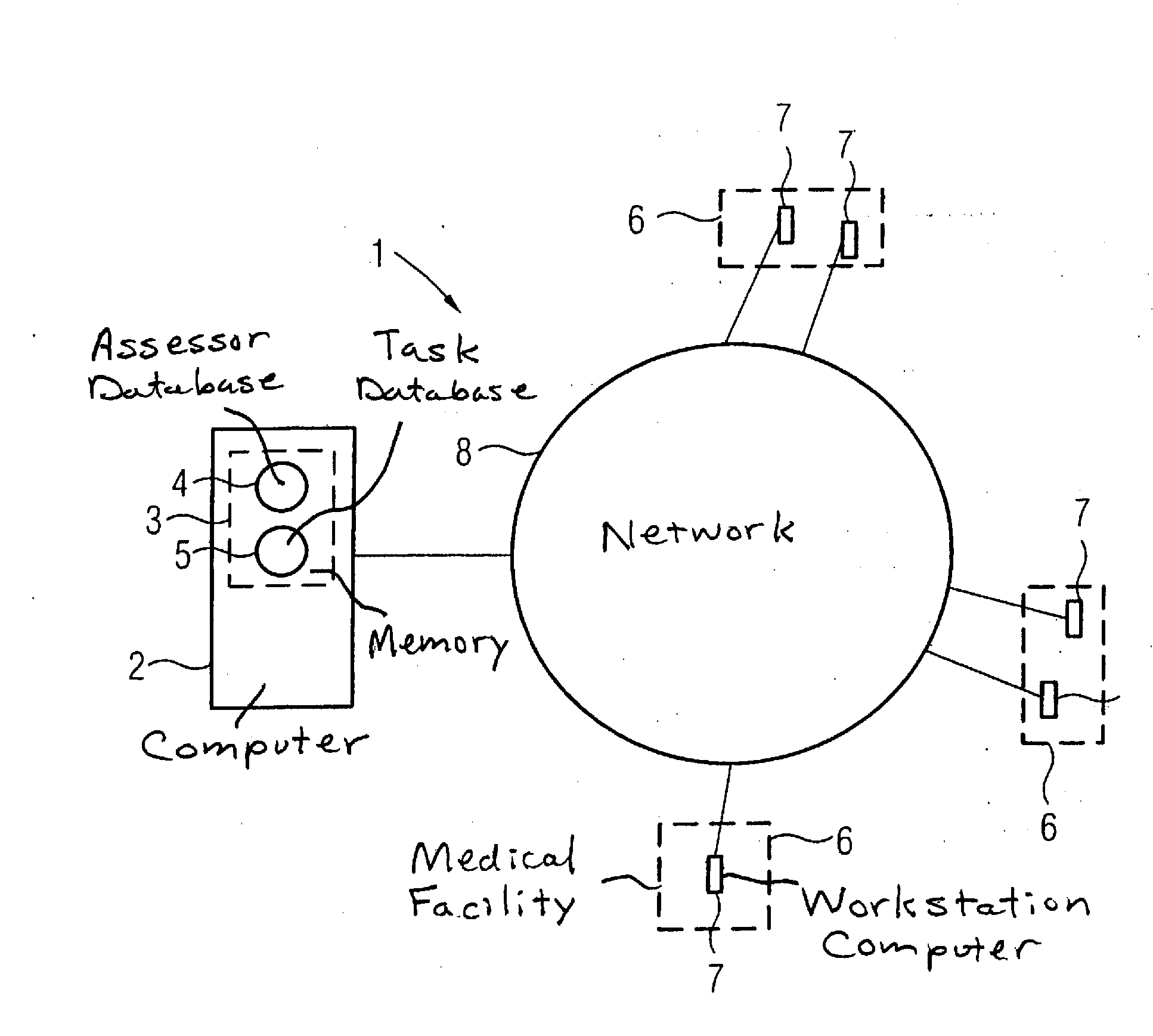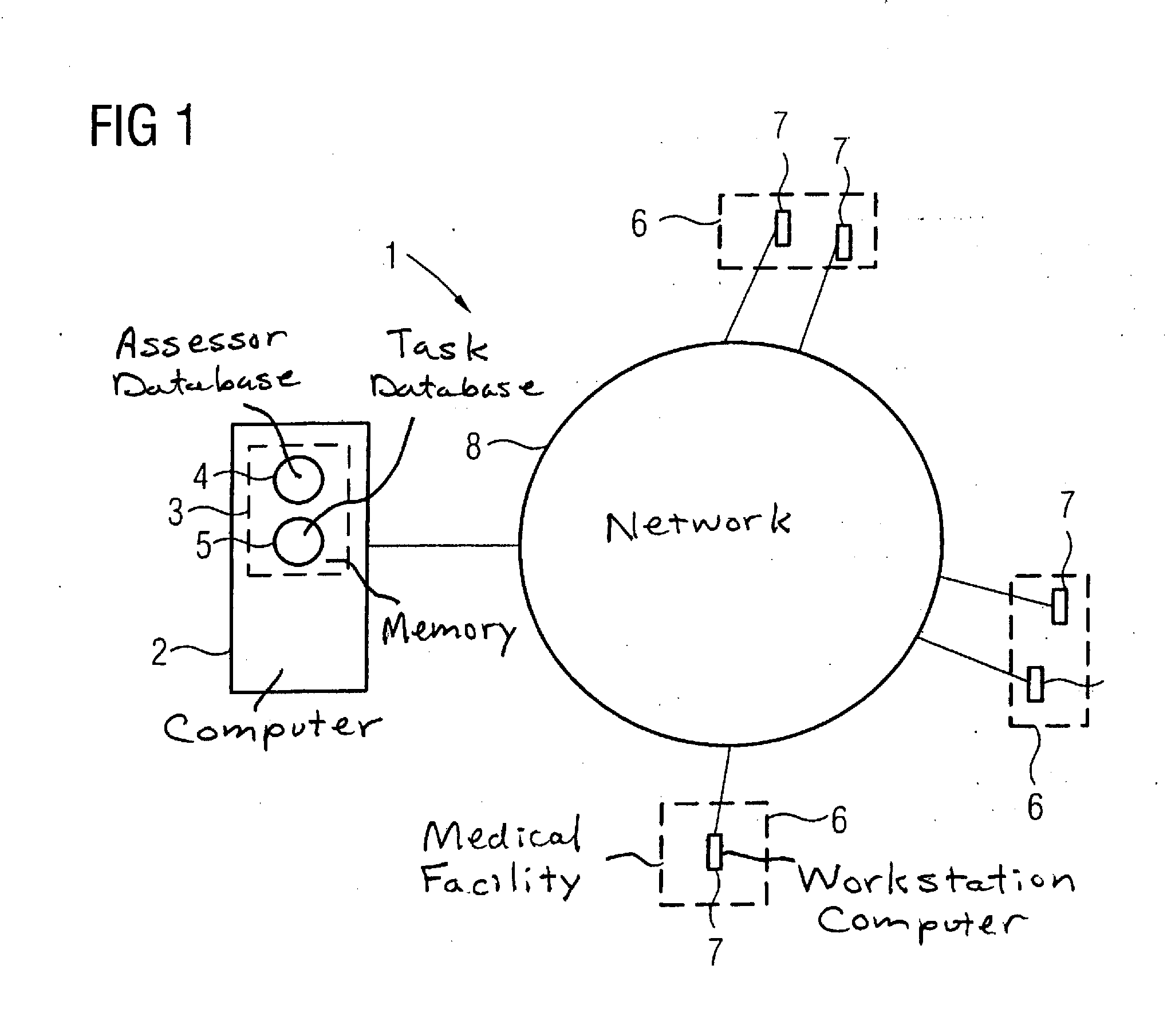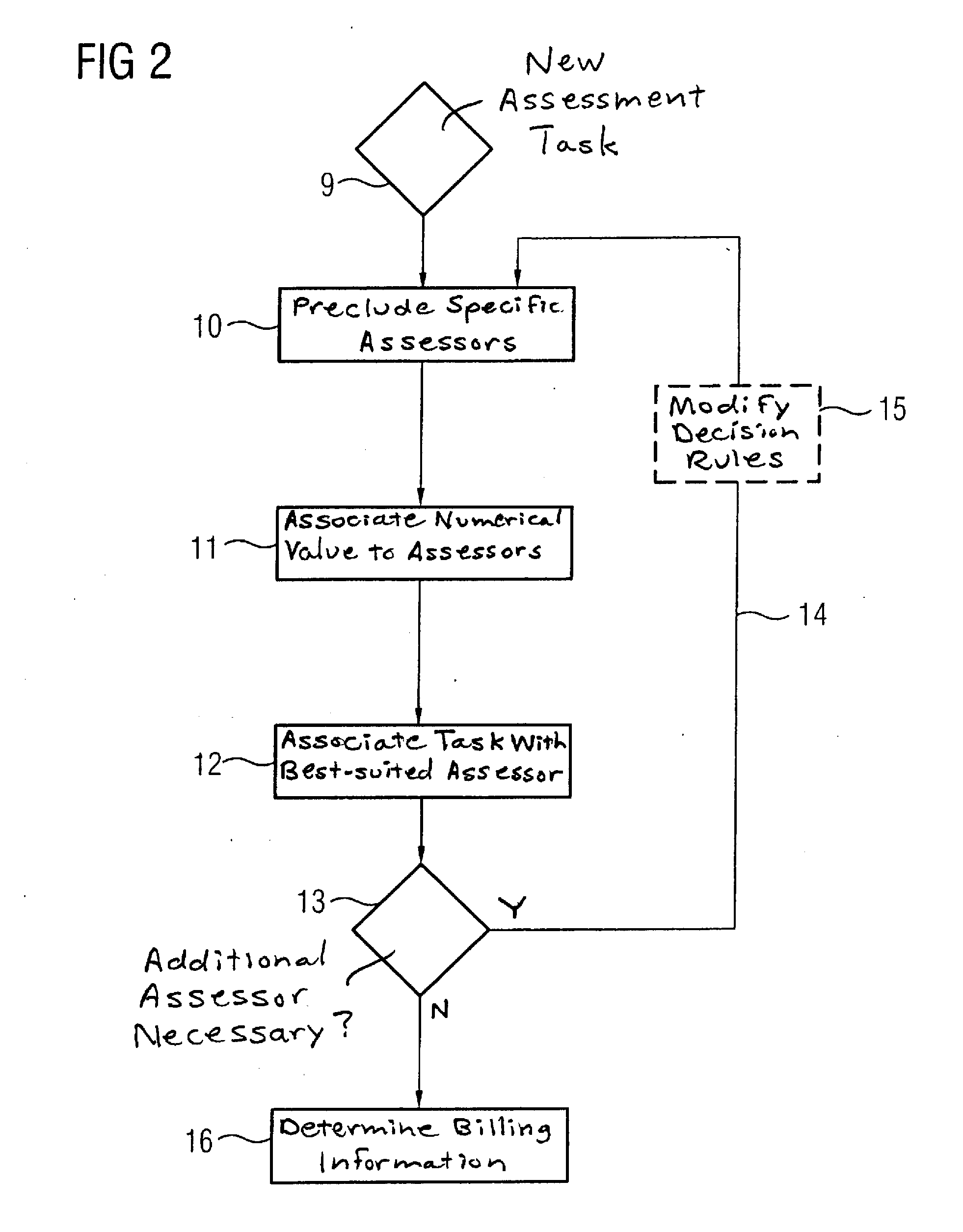[0008]An object of the present invention is to provide a method that allows an improved, more cost-effective, and flexible and expandable but automated, an association of
medical assessment with an assessor.
[0012]In particular a marked cost decrease is possible by the automated assignment of assessment tasks to assessors that is enabled in this way. A flexible
system is additionally achieved in which various focal points can advantageously be emphasized through corresponding selection of the decision rules, for example an optimized utilization of the personnel, an excellent
quality control and
quality assurance, and a cost decrease in the task allocation.
[0015]Information about specific assessment tasks still to be conducted can be used as selection information in general (but in particular as additional selection information) to obtain a qualification and / or the necessary assignment of an additional assessor. In particular, physicians in training or new entrants into the workplace frequently require a specific number of completed assessments in order to obtain the qualification for a specific type of assessment tasks. In this type of training it is in most cases necessary for an additional assessor to be assigned who checks the finding produced by the assessor to be trained. or compares it with his or her own finding. Therefore, in an additional embodiment of the method when it is necessary to assign an additional assessor, this additional assessor is likewise assigned by the method, in particular using modified task information and / or modified decision rules. For example, the additional assessor should already possess the necessary qualification that is sought by the primary assessor, and / or be assigned to the primary assessor for supervision. An additional modified
decision rule can cause a particularly experienced or particularly qualified additional assessor to be assigned. This can also be expressed by changing the task information, for example by, instead of a normal assessment task, requiring a control (supervised) assessment task. The primary assessor can additionally be informed of the finding of an additional assessor, and / or the quality of the finding of the primary assessor can be registered. In this way the method can additionally be used as a learning aid by the primary assessor can comparing the finding of the experienced additional assessor with his or her own assessment. Moreover, the performance of the primary assessor can be polled and monitored at any time, in particular also with regard to his or her attainment of the qualifications.
[0016]It is of particular
advantage when the assessors of multiple medical facilities (in particular multiple hospitals and / or physicians' practices) are entered as assessors in the assessor
database. Multiple significant advantages are achieved in this way. It is possible to utilize the expert potential of multiple medical facilities. Accordingly, if an expert for a specific assessment task is not present in a hospital or a physician's practice, such an expert can nevertheless be located outside of this medical facility. An outsourcing for
medical assessment is additionally possible in a comfortable manner. It is thereby possible to reduce the
workload of the assessors of a medical facility and
cost savings maybe possible if outside assessors conduct the findings at a reduced price.
[0021]As an alternative to the embodiment with price information on the part of the assessor, the task information can include price information describing the remuneration to be paid to the assessor. In this way the remuneration for an assessment task can be established by the assigner directly. In a further embodiment, the price to be paid can be increased as time passes without finding an assessor. In this way it is ensured that even difficult, time-consuming findings ultimately find an assessor, even if the assessment task has previously been declined by the associated assessor.
[0023]The method according to the invention also offers excellent avenues for
quality assurance. For example, a selectable portion (number) of the assessment tasks can be assigned to at least two assessors. For
quality assurance, the findings of the at least two assessors can then be automatically inspected for agreement. Given a lack of agreement of the findings, the assessment task is assigned by the method to a third assessor (in particular using modified task information and / or modified decision rules), and the third assessor evaluates the findings for their
correctness. The number or the proportion of wrong findings for specific finding types is stored in the
database as selection information. Accordingly it is automatically, initially checked whether the findings (thus ultimately the diagnoses) agree. This can occur using the typical abbreviations for specific diagnoses, for example. The ICD code (International
Statistical Classification of Diseases and Related
Health Problems) is suitable for this purpose. If the comparison yields that the assessors came to different results, the assessment task is assigned by the method to a third assessor. The decision rules and / or the task information can then be modified, for example to cause an especially
qualified person to receive the assignment of the assessment task. This third assessor then generates an additional finding (possibly even without knowledge of the results of the previous findings) that can be compared with the findings of the first two assessors, or the third assessor directly checks the findings of the first two assessors. If it results that a finding has been incorrect, this information is noted for the respective assessor. The assessment reliability of a given assessor thus can be checked at any time. This selection information may then possibly also be taken into account in the assignment of assessment tasks. An assessor may even become barred from an associated finding type, and / or measures can be recommended to the assessor to increase his or her qualifications if the assessor exceeds a
limit value for incorrect findings and / or the proportion of incorrect findings. Such a bar can then be taken into account as required selection information through a corresponding
decision rule. This simultaneously serves as a motivation tool for the assessor to take the recommended measures to improve his or her qualifications, for example to attend development curses or refresher courses. In this way the quality of the findings is sustainably ensured.
 Login to View More
Login to View More  Login to View More
Login to View More 


